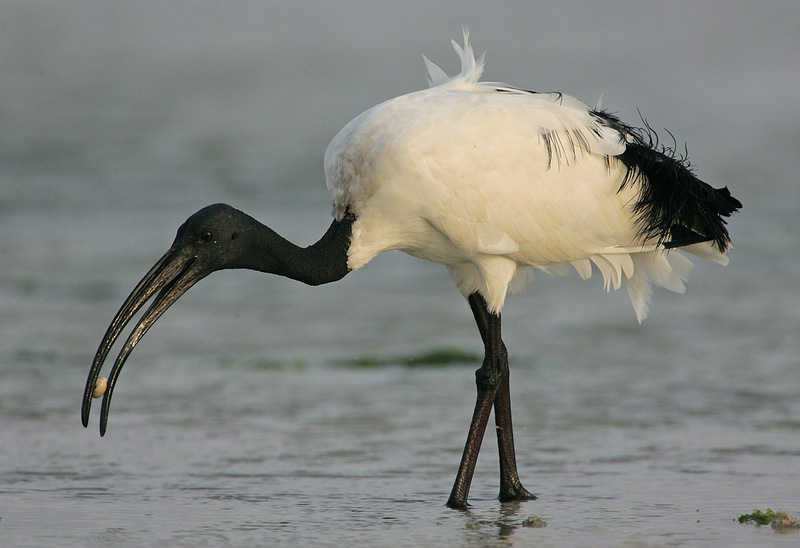|
| 질의: pelecaniformes | 결과: 122번째/153 | |
African sacred ibis (Threskiornis aethiopicus)
| 제목: | African sacred ibis (Threskiornis aethiopicus)
| | 올린이: | Wiki Photos (---@---.---)
| |

| 해상도: 1200x822
파일크기: 214572 Bytes
촬영일: 2007:08:07 15:06:09
사진기: Canon EOS-1D Mark II (Canon)
F number: f/8.0
Exposure: 1/1000 sec
Focal Length: 10000/10
등록시간: 2017:01:28 23:10:08
|
Description
Threskiornis aethiopicus
English: A African Sacred Ibis in the Mida Creek mud flats, Kenya.
Date 7 August 2007, 15:06
Source Sacred Ibis (Threskiornis aethiopicus) http://www.flickr.com/photos/rainbirder/5346900461/
Author Steve Garvie from Dunfermline, Fife, Scotland http://www.flickr.com/photos/50079771@N08
Source: https://commons.wikimedia.org/wiki/File:Threskiornis_aethiopicus_-Mida_Creek_mud_flats,_Kenya-8.jpg
The African sacred ibis (Threskiornis aethiopicus) is a species of ibis. Its sister species is the Australian white ibis. A wading bird of the ibis family, Threskiornithidae, the sacred ibis breeds in Sub-Saharan Africa, southeastern Iraq, and formerly in Egypt, where it was venerated and often mummified as a symbol of the god Thoth. The African sacred ibis occurs in marshy wetlands and mud flats, both inland and on the coast. It will also visit cultivation and rubbish dumps. Order: Pelecaniformes, Family: Threskiornithidae, Subfamily: Threskiornithinae. |
^o^
동물그림창고 똑똑전화 누리집
^o^
|
|

